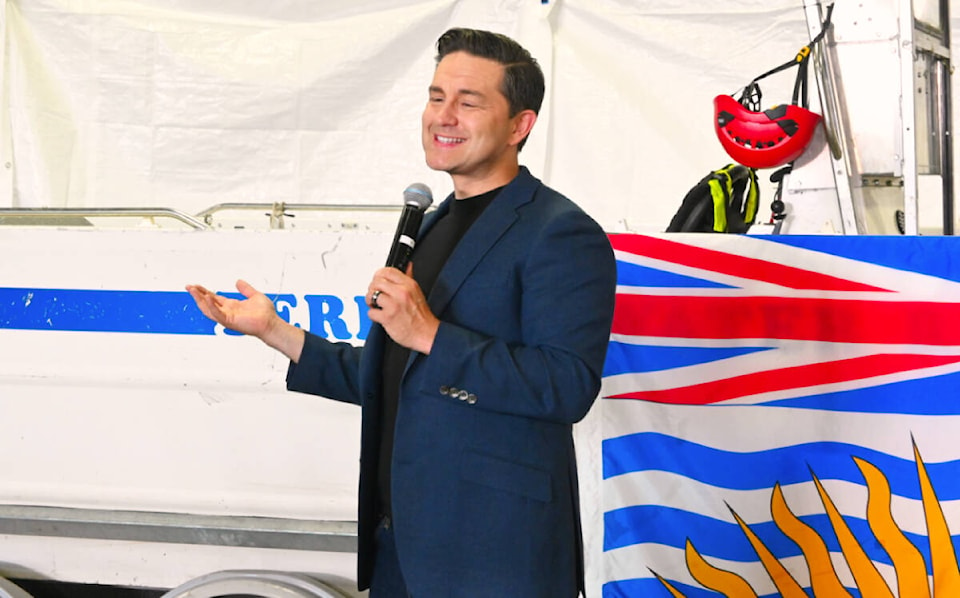Pierre Poilievre has now made two visits to the Skeena-Bulkley Valley (S-BV) riding since taking the helm of the Conservative Party of Canada a year ago.
Even during elections, Erin O’Toole never visited. Nor did Andrew Scheer.
That’s not a big surprise. Ever since redistricting created the S-BV riding from the Skeena riding and parts of the Prince George-Bulkley Valley and Cariboo-Chilcotin ridings, it has been an NDP stronghold.
Party leaders tend to concentrate on swing ridings — ones they think they can potentially turn — so, they can be forgiven for thinking this one was a lost cause in past elections.
But politically, voters in the eastern part of the new riding (from Smithers to Burns Lake) still tend to favour conservative candidates. From 1993 to 2004, Prince George-Bulkley Valley was represented by the Reform, Canadian Alliance and Conservative parties.
Similarly, Cariboo-Chilcotin elected Progressive Conservative, Reform, Alliance and Conservative MPs during the lifespan of that riding from 1979 to 2004.
The very first S-BV election in 2004 was pretty tight between the NDP’s then-novice candidate Nathan Cullen and the Conservative’s Andy Burton with Cullen taking 37.1 per cent of the vote to Burton’s 33.7 per cent.
But Cullen, who was, to his credit, a hard-working MP, quickly grew that advantage to 48.3, 49.8, 55.2 and 51.1 in subsequent elections.
NDP support took a bit of a dip, as can be expected, with a new NDP candidate in 2019, but Taylor Bachrach still garnered 40.9 per cent of the vote for a margin of victory over the Conservative’s Claire Rattée of 7.7 per cent.
Bachrach, also a hard-working MP, increased his vote in 2021 to 42.6 per cent, but Rattée closed the gap a bit to 6.5 per cent.
All Rattée needed to change the outcome was to turn some of the other conservative voters in the riding. Combined, the People’s, Liberal and Christian Heritage parties got 17.5 per cent of the vote.
Enter Poilievre, who seems very interested in Skeena-Bulkley Valley. He only needs to turn 38 per cent of that 17.5 per cent providing NDP support remains steady.
And with Prime Minister Justin Trudeau and his Liberals on the ropes in the polls, the path to victory locally could be boosted by the likelihood of a national Conservative win.
There are, of course, wildcards to factor into the equation. The Conservatives still have not named a candidate, so there’s the strength of their candidate to consider.
Also, there is the strength of the Liberal candidate. Last time, the Liberals had about as weak a candidate as possible, parachuting in Lakhwinder Jhaj — who only set foot in the riding once and never made it east of Prince Rupert — from the Lower Mainland.
A similarly weak candidate for the Liberals could benefit the Conservatives, while a stronger more local choice could siphon off votes from the NDP.
Wildcard three is the People’s Party. Their vote was largely a protest vote over government responses to COVID-19. With things settled down on that front and a Conservative Party now leaning further to the right, those votes are ripe for picking.
Finally, there is the length of time until the next election. If the Liberal-NDP coalition survives — which it would be in both parties’ favours to ensure it does — the next election isn’t until 2025. A lot can change in two years.
The Conservatives have a path to victory in Skeena-Bulkley Valley.
The NDP should be concerned.
